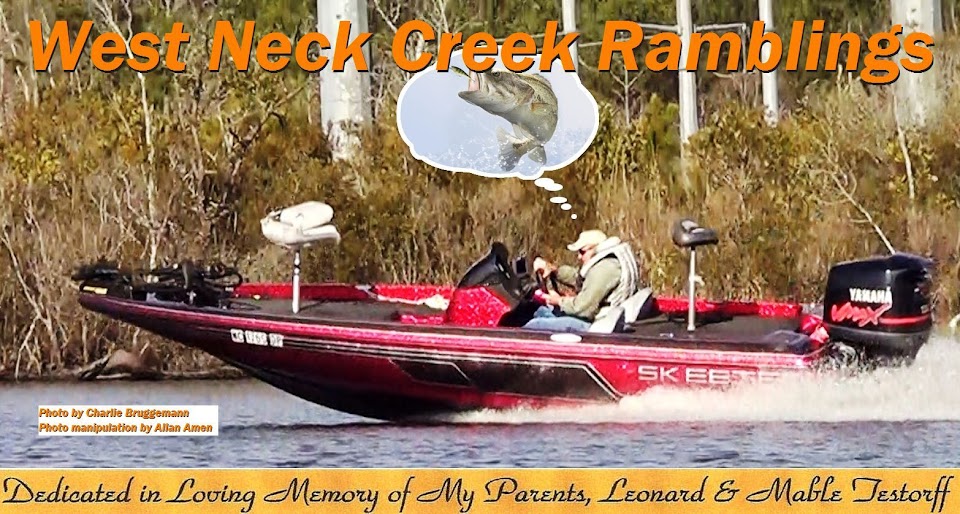And/or if you're really tired of others passing you, why not do the obvious and buy a faster bass boat? And, no, I'm not talking about boats that run just 70, 80 or 90 mph. I'm referring to boats capable of reaching triple-digit speeds. My online research reveals there are at least three brands seemingly capable of taking you to that favorite honey hole at speeds greater than 100 mph. In alphabetical order, the choices are Allison (pictured above), Bullet (pictured at bottom) and Stroker (pictured midway down).
Your best bet, however, likely is an Allison XB-2002, since it holds the current APBA (American Power Boat Association) Kilo speed record of 116.594 mph. It set that mark back on April 22, 2005--under adverse weather conditions, no less.
A word of caution, however, just because your pockets may be deep enough to afford a boat like this doesn't mean you should rush out and buy one without due consideration and preparation. There's more to operating a high-performance bass rig than jumping into the driver's seat, firing up the outboard, and laying on the throttle, especially if it's your first one.
Become familiar with the capabilities of your boat. Start slow and only run it at higher speeds when conditions permit. Too many bass boaters know nothing between dead stop and full throttle. These individuals often are a threat to themselves, their passengers, and every other boater on the same water. Do everyone, including yourself, a favor, and forget a high-end boat if you can't act responsibly at the helm. There are enough jackasses in this world--and that's without counting the politicians.
Part of being a good driver at high speeds is knowing when you can put the hammer down and calculating the best route to your next spot. While the shortest distance may be a straight line, it may not be the best choice. You need to consider wind and boat traffic, either one of which can make the shortest route hazardous. You ultimately can end up with two options: run fast and take a roundabout route, or back off on your speed and follow a straight line.
Stay clear of other boats when possible because there are risks involved with jumping their wakes, especially at high speeds. You also have no way of knowing the capabilities of those other drivers. They might be total morons, who could hurt you or damage your boat with their stupid actions. Driving a boat safely is as important as driving a vehicle safely on roadways with high-traffic volume.
Another consideration is to wear adequate eye protection. For some, that may mean wearing goggles or sunglasses when operating a boat. A motorcycle or snowmobile helmet may be in order to endure winter conditions or perhaps to reduce wind resistance so that you can see better. Let's face it: Whether you're running 70+ or 100+, you need to have clear vision.
Don't forget to fasten the kill-switch lanyard every time you're at the boat's helm. Bear in mind, though, that the kill switch is just one part of a boat's safety equation. The main thing you have to remember is to drive the boat safely.
Earlier, I mentioned the "deep pockets" it takes to afford today's high-performance bass rigs. A boat owner's expenditures, however, include more than just the purchase price. You also have to buy insurance and, of course, gas. I asked a friend the other day about his high-performance boat's gas consumption, and here was his response. "If I were to run my rig at full throttle for an hour, I would burn approximately 11 gallons of gas." His boat turns about 70 mph wide open.
Bottom line: You need to weigh all these matters carefully before you commit to buying a high-end bass boat.
Here's a list of some videos you might enjoy:
https://www.youtube.com/watch?v=FoDhyqS2SMk
https://www.youtube.com/watch?v=jqH0hfsde2g
https://www.youtube.com/watch?v=s3YTO1Sde3Q
https://www.youtube.com/watch?v=a9ux5fwmHxU





No comments:
Post a Comment